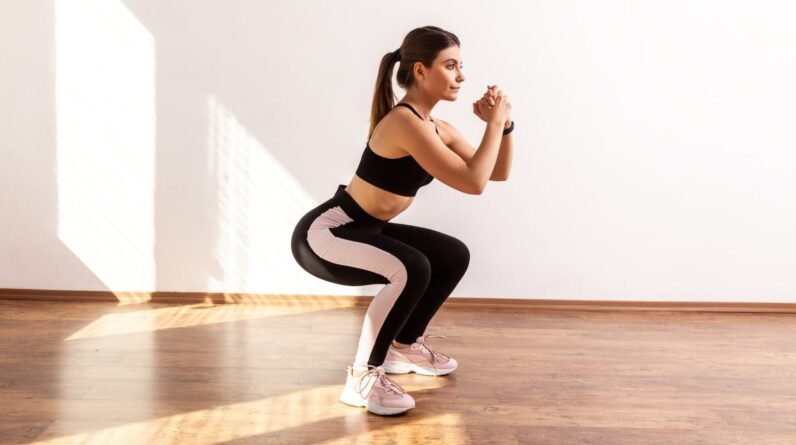
The FITT principle can help to meet your fitness goals. Don’t know how to get started? We tell you how to use FITT for fitness while working out.
Thinking about starting a fitness plan but not sure where to begin? You should try the FIIT principle, which stands for Frequency, Intensity, Time, and Type—four key elements to a solid workout plan. It can be a great addition to your workout if you love a structured fitness plan. Whether you want to lose weight, tone or strengthen your body, all four components are required to keep yourself fit and healthy. While choosing a fitness plan, your focus should not be only on the type of exercise, but how hard and how long you need to do them are equally important. Know the benefits of FITT for fitness and how to include it in your regimen.
What is FITT principle for fitness?
Be it walking or doing squats, any physical activity is a multi-faceted behaviour. It consists of the components — frequency, intensity, time and type (FITT), according to a research published in the Canadian Journal Of Public Health in 2011. “So, the FITT principle is a core element in fitness planning, as it adds structure to workouts, makes them balanced, goal-oriented, and effective,” says physiotherapist and fitness expert Dr Aijaz Ashai. It can significantly contribute to the improvement of aerobic, and muscle fitness as well as flexibility, as per 2021 research published in Advances in Health Sciences Research.

1. Frequency
It is the number of times you choose to train in a week. It is measured weekly, and it is the only component that balances workout sessions so that time is provided for recovery. “Overtraining will be avoided, preventing injuries or burnout,” says the expert. Beginners may begin with 3 days a week, which will gradually increase to 5 days as the fitness level improves.
2. Intensity
It is the amount of effort that is put into exercise, and is often measured by heart rate or perceived exertion, with higher intensities burning off more calories in less time and lower intensities preferred for endurance. The correct adjustment of intensity according to your fitness goals can maximise desired results without risking strain.
You may also like


3. Time
It focuses on how long the session of the exercise should be. While longer periods can help burn more calories, the workout can be as effective when the duration is short but the intensity is high. Especially if weight loss is the objective, a balanced duration that suits the personal fitness goal will prevent it from becoming too exhausting or too long to be able to sustain it. On average, adults should do moderate-intensity exercise for about 150 minutes in a week, according to The American College of Cardiology.
4. Type
It is the kind of exercise done, which can include cardio, or strength training exercises. Changing the type will do away with boredom, make you fit holistically, and keep pushing your body. “Type variations in your workout help target different muscle groups,” says Dr Ashai.
What are the benefits of FITT for fitness?
- Easy to adapt to: By the principle of FITT, you will be able to create a schedule that will suit your needs. Such a method of workout designing is highly adaptable. “But exercises in the plan can neither be too easy nor too tough,” says the expert.
- Motivates you: The structure of FITT makes consistency more achievable and allows for monitoring. Workouts with specific objectives are easier to be maintained and followed in the daily routine.
- Better outcome: FITT will allow you to focus on goals such as strength, endurance, or weight loss, which is achieved by thoughtful planning. This directed planning ensures that the outcomes of the workout are enhanced.
- Reduces injury risks: It avoids overtraining and, reduces the potential for injury, especially if you are a beginner or recovering from previous injuries through adjustments in frequency, intensity, and time.
Not losing weight? 10 HIIT exercises to boost your metabolism

How to use FITT for fitness?
If you want to build strength, use the FITT principle in the following way –
- Frequency: Train 3 to 4 times per week, ensuring a minimum of 48 hours between workouts targeting the same muscle group to allow for muscle recovery and growth.
- Intensity: Your intensity is connected to the amount of weight you choose to lift as well as the number of sets and reps you do. If you are just starting out, as a beginner you should use a light weight to build muscle. You can do two or three sets of 12 to 20 reps. Aim for three sets of 12 reps to maximise muscle engagement.
- Time: Each session can last 45 to 60 minutes, including a 5 to 10-minute warm-up and cool-down.
- Type: Focus on compound movements such as squats, deadlifts, and bench presses to work multiple muscle groups. Supplement by doing isolation exercises such as bicep curls, triceps extensions to target specific muscles.
FITT principle for weight loss
- Frequency: Schedule 4 to 5 sessions per week to maintain an active metabolism and burn calories. “Include both cardio and strength circuits to preserve lean muscle,” suggests Dr Ashai.
- Intensity: Incorporate HIIT (High-Intensity Interval Training) for high-calorie burn 1 to 2 times a week. On other days, do steady-state cardio workout at moderate intensity or active recovery at low intensity.
- Time: Each session should be 30 to 60 minutes. For HIIT, keep it to 20 to 30 minutes of intense intervals, while steady-state cardio can last 45 to 60 minutes for sustained calorie burn.
- Type: Alternate between cardio (running, and cycling) and strength circuits (goblet squats) to maintain muscle mass while promoting fat loss. Cardio burns calories, while strength training boosts resting calorie expenditure.
Follow the FITT principle, as it is adaptable across all fitness levels. Beginners, moderate exercisers, and even advanced athletes can modify FITT for fitness.







